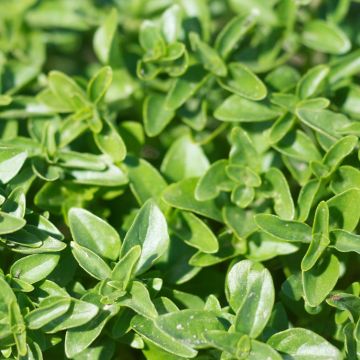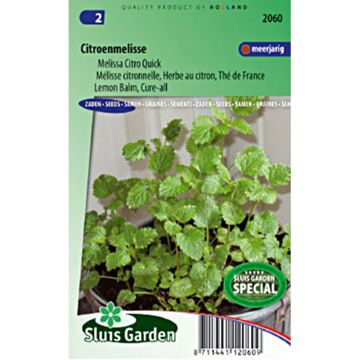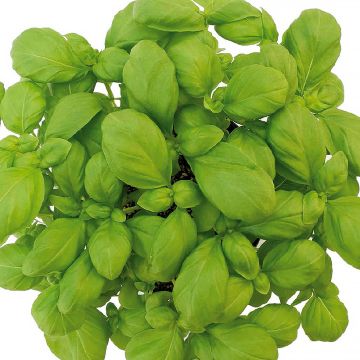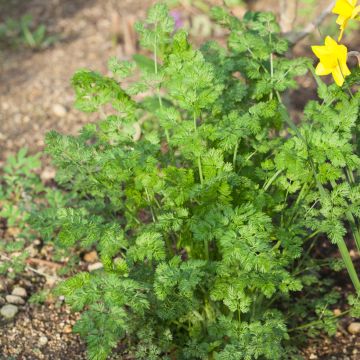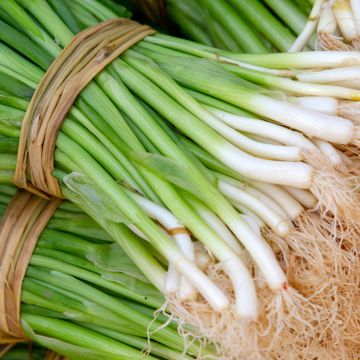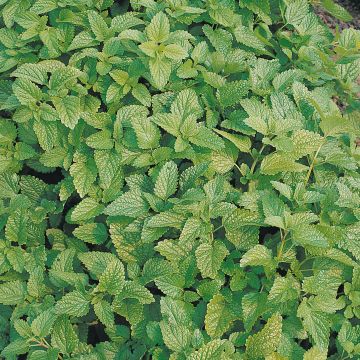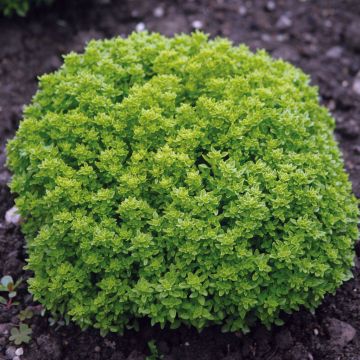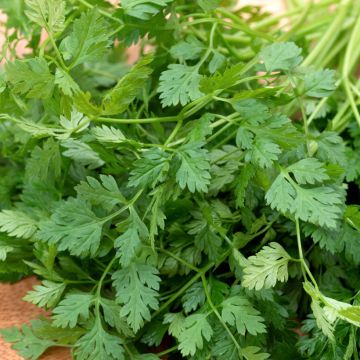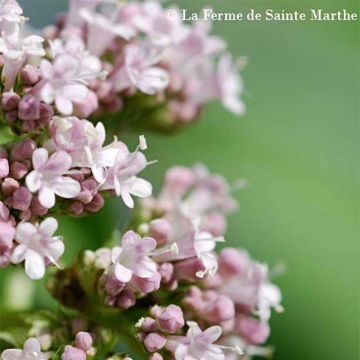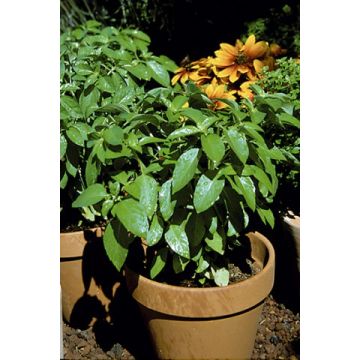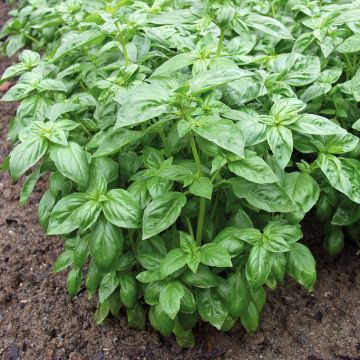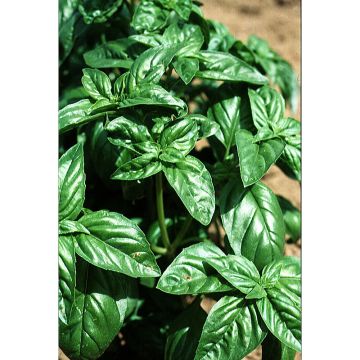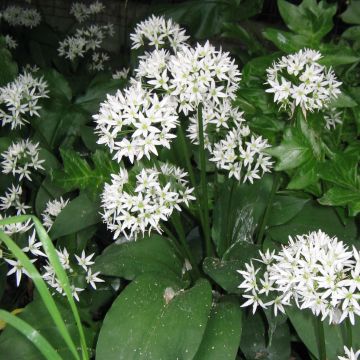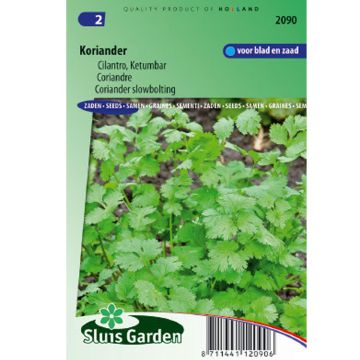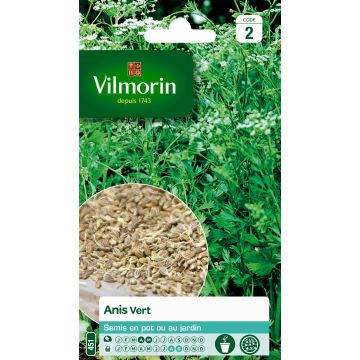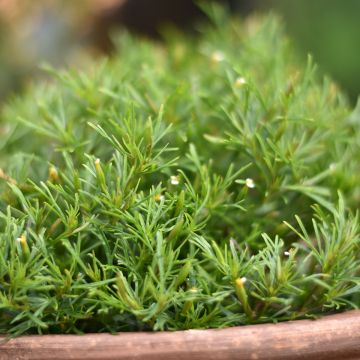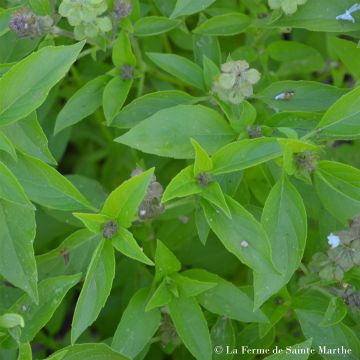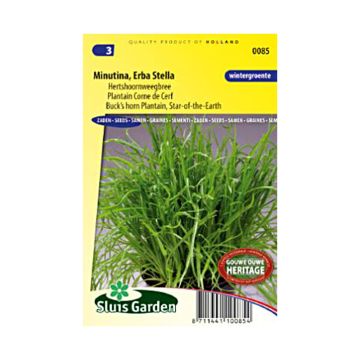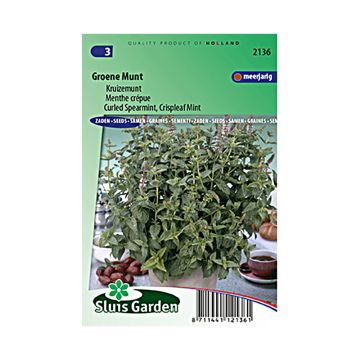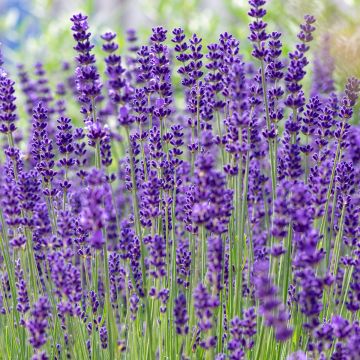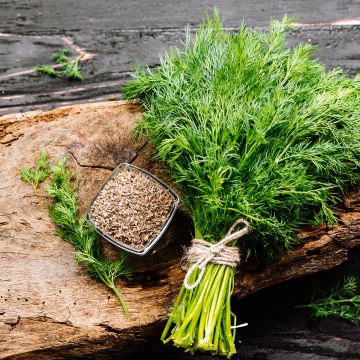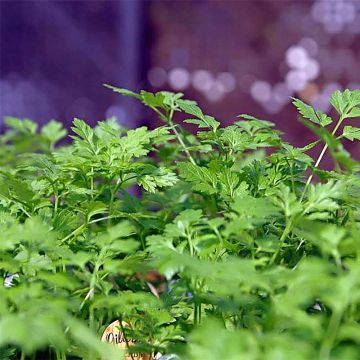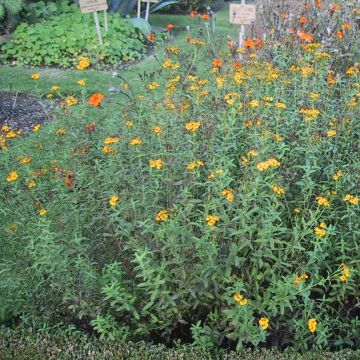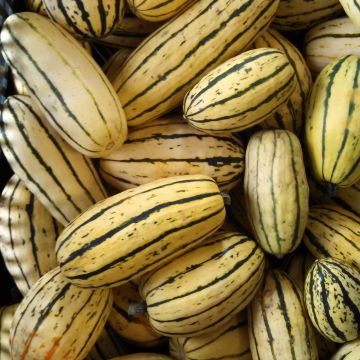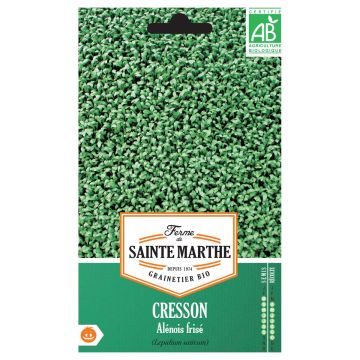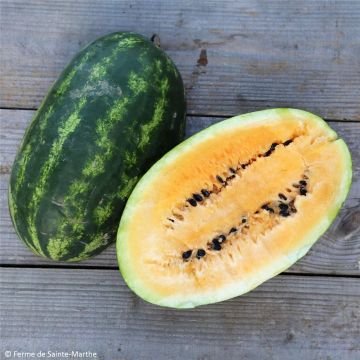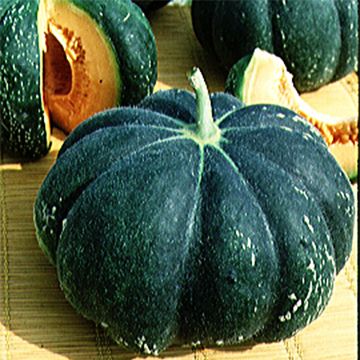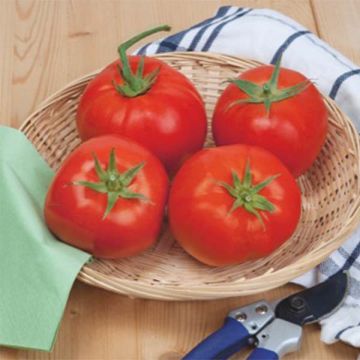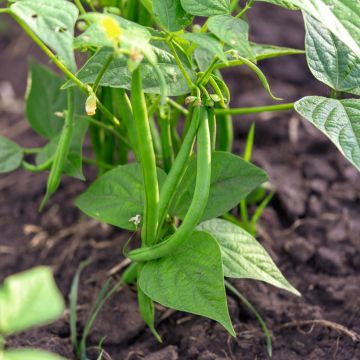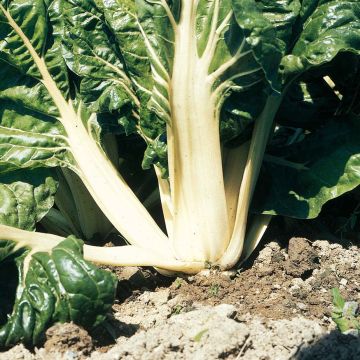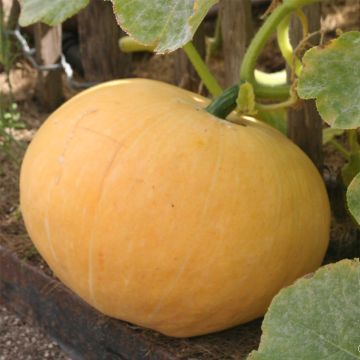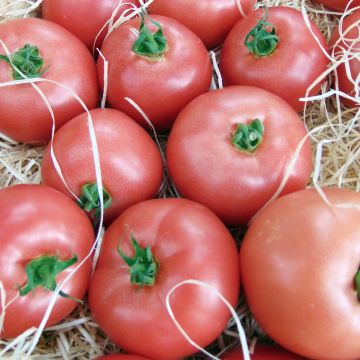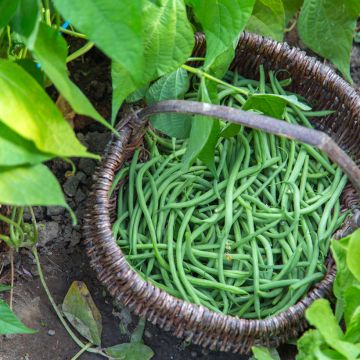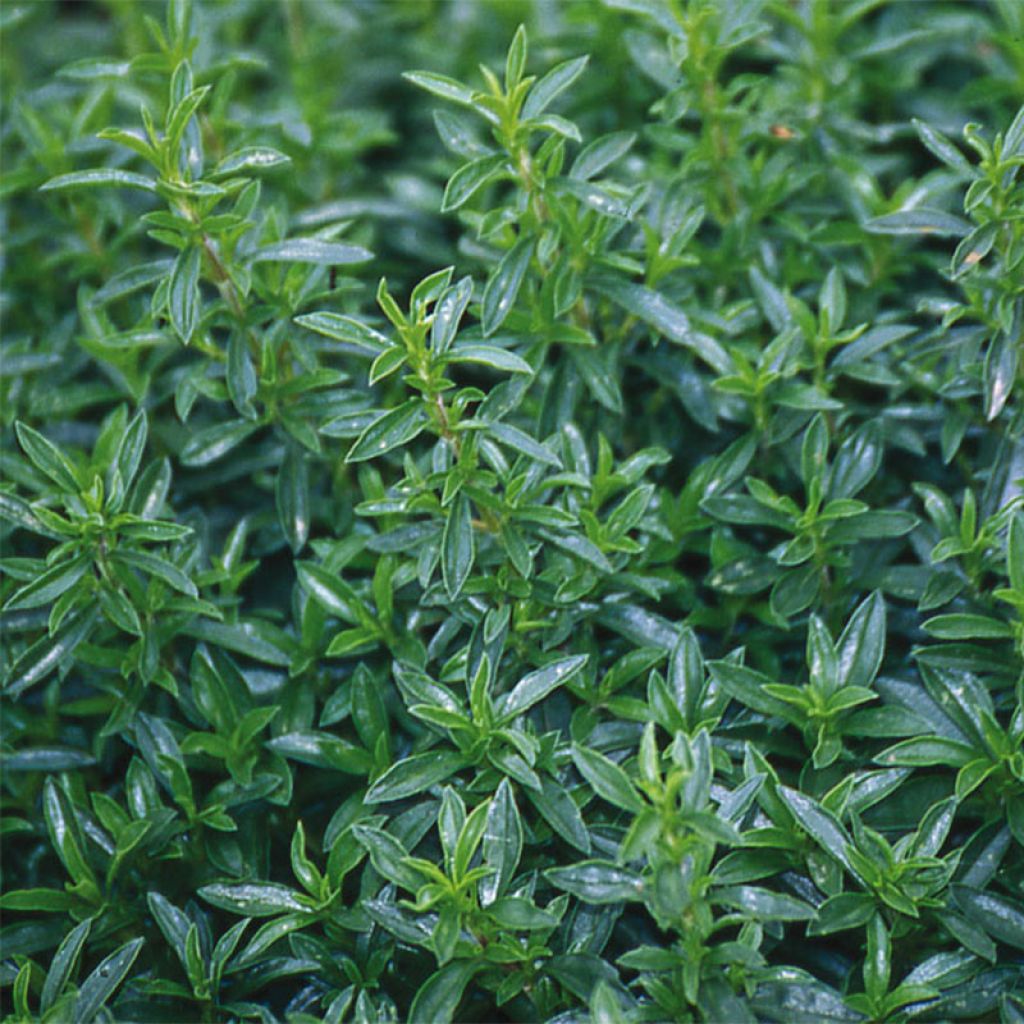

Sarriette Vivace Bio - Satureja montana
Organic Perennial Savory - Satureja montana
Satureja montana
Winter Savory
I highly recommend this website!
SCI Maraîche B., 28/02/2017
Why not try an alternative variety in stock?
View all →This plant carries a 6 months recovery warranty
More information
We guarantee the quality of our plants for a full growing cycle, and will replace at our expense any plant that fails to recover under normal climatic and planting conditions.
Seed-only orders are dispatched by sealed envelope. The delivery charge for seed-only orders is €3.90.
Description
Winter Savory or Mountain Savory (Satujera montana) is an herbaceous perennial, used as a condiment, aromatic and medicinal plant, reaching a height of 20 to 30cm (8 to 12in). This herb is cultivated for its tender green leaves with a pungent and peppery flavour that adds aroma to stuffings, game, stews, salads and vegetables. It is milder than Summer Savory. It can also be used for infusions. Sow from April to May for a harvest from June to October the following year.
Naturally growing in scrubland, fallow fields and sunny slopes, Savory is a typical aromatic plant of Mediterranean cuisine. It belongs to the Lamiaceae family and produces pretty blueish-white edible flowers from July to September. It is quite hardy, at least down to -15°C (5°F). Mountain Savory forms a beautiful cushion of small shiny green leaves that release a strong scent similar to Thyme when crushed.
In cooking, this spicy and slightly bitter herb is used as a condiment to give a Mediterranean flavour to many dishes. Consumed as an infusion, it aids digestion and relieves bloating. Its leaves can also be used fresh in poultices to soothe skin irritations such as insect bites. It is an undemanding plant that grows in the sun and in dry and well-drained soil. At the end of winter, prune it into a compact shape with shears to maintain its compact habit.
Harvest: the leaves are harvested from June to October by simply cutting the branches. It is preferable to do this before flowering to preserve its full aroma.
Storage: Savory keeps very well once dried.
Gardener's tip: in the garden, don't hesitate to mix things up by planting some aromatic plants like Savory in the middle of your perennial borders or even in sunny rockeries. It looks very pretty and the sometimes strong scent of aromatic plants often has the ability to repel insects that may attack more delicate plants such as certain roses.
Organic or "AB" seeds come from plants grown in organic agriculture (without the use of pesticides). They undergo no treatment after harvest. These seeds are suitable for organic market gardening.
Report an error about the product description
Harvest
Plant habit
Foliage
Botanical data
Satureja
montana
Lamiaceae
Winter Savory
Mediterranean
Perennial
Other Herb seeds
Planting and care
Sowing :
Winter Savory seeds are sown from April to May at a temperature between 13 and 16°. Germination usually takes 18 to 24 days. The sowing is done in a tray filled with good sowing compost, placed in full light. The seeds are lightly buried and just covered with a pinch of compost or vermiculite. The tray should not be covered as Savory is sensitive to humidity, so keep the substrate moist but not waterlogged.
When the seedlings appear strong enough to handle, transplant them into individual pots and gradually acclimatise them to cooler conditions. Transplanting to the garden or into pots should be done when the plants are well developed, and they may spend their first winter in a cold frame if necessary.
Cultivation :
Savory is a hardy and easy-to-grow herb that thrives in poor, light, and even rocky well-drained soils. It should be planted in a sunny location. If your soil is rather moist and clayey, we recommend growing it in a pot where it will thrive. As for maintenance, water every 15 days or monthly if the plant is already well established. An annual pruning (on the wood of the current year) will maintain a nice rounded and compact habit.
Seedlings
Care
Intended location
-
, onOrder confirmed
Reply from on Promesse de fleurs
Vegetable seeds
Haven't found what you were looking for?
Hardiness is the lowest winter temperature a plant can endure without suffering serious damage or even dying. However, hardiness is affected by location (a sheltered area, such as a patio), protection (winter cover) and soil type (hardiness is improved by well-drained soil).

Photo Sharing Terms & Conditions
In order to encourage gardeners to interact and share their experiences, Promesse de fleurs offers various media enabling content to be uploaded onto its Site - in particular via the ‘Photo sharing’ module.
The User agrees to refrain from:
- Posting any content that is illegal, prejudicial, insulting, racist, inciteful to hatred, revisionist, contrary to public decency, that infringes on privacy or on the privacy rights of third parties, in particular the publicity rights of persons and goods, intellectual property rights, or the right to privacy.
- Submitting content on behalf of a third party;
- Impersonate the identity of a third party and/or publish any personal information about a third party;
In general, the User undertakes to refrain from any unethical behaviour.
All Content (in particular text, comments, files, images, photos, videos, creative works, etc.), which may be subject to property or intellectual property rights, image or other private rights, shall remain the property of the User, subject to the limited rights granted by the terms of the licence granted by Promesse de fleurs as stated below. Users are at liberty to publish or not to publish such Content on the Site, notably via the ‘Photo Sharing’ facility, and accept that this Content shall be made public and freely accessible, notably on the Internet.
Users further acknowledge, undertake to have ,and guarantee that they hold all necessary rights and permissions to publish such material on the Site, in particular with regard to the legislation in force pertaining to any privacy, property, intellectual property, image, or contractual rights, or rights of any other nature. By publishing such Content on the Site, Users acknowledge accepting full liability as publishers of the Content within the meaning of the law, and grant Promesse de fleurs, free of charge, an inclusive, worldwide licence for the said Content for the entire duration of its publication, including all reproduction, representation, up/downloading, displaying, performing, transmission, and storage rights.
Users also grant permission for their name to be linked to the Content and accept that this link may not always be made available.
By engaging in posting material, Users consent to their Content becoming automatically accessible on the Internet, in particular on other sites and/or blogs and/or web pages of the Promesse de fleurs site, including in particular social pages and the Promesse de fleurs catalogue.
Users may secure the removal of entrusted content free of charge by issuing a simple request via our contact form.
The flowering period indicated on our website applies to countries and regions located in USDA zone 8 (France, the United Kingdom, Ireland, the Netherlands, etc.)
It will vary according to where you live:
- In zones 9 to 10 (Italy, Spain, Greece, etc.), flowering will occur about 2 to 4 weeks earlier.
- In zones 6 to 7 (Germany, Poland, Slovenia, and lower mountainous regions), flowering will be delayed by 2 to 3 weeks.
- In zone 5 (Central Europe, Scandinavia), blooming will be delayed by 3 to 5 weeks.
In temperate climates, pruning of spring-flowering shrubs (forsythia, spireas, etc.) should be done just after flowering.
Pruning of summer-flowering shrubs (Indian Lilac, Perovskia, etc.) can be done in winter or spring.
In cold regions as well as with frost-sensitive plants, avoid pruning too early when severe frosts may still occur.
The planting period indicated on our website applies to countries and regions located in USDA zone 8 (France, United Kingdom, Ireland, Netherlands).
It will vary according to where you live:
- In Mediterranean zones (Marseille, Madrid, Milan, etc.), autumn and winter are the best planting periods.
- In continental zones (Strasbourg, Munich, Vienna, etc.), delay planting by 2 to 3 weeks in spring and bring it forward by 2 to 4 weeks in autumn.
- In mountainous regions (the Alps, Pyrenees, Carpathians, etc.), it is best to plant in late spring (May-June) or late summer (August-September).
The harvesting period indicated on our website applies to countries and regions in USDA zone 8 (France, England, Ireland, the Netherlands).
In colder areas (Scandinavia, Poland, Austria...) fruit and vegetable harvests are likely to be delayed by 3-4 weeks.
In warmer areas (Italy, Spain, Greece, etc.), harvesting will probably take place earlier, depending on weather conditions.
The sowing periods indicated on our website apply to countries and regions within USDA Zone 8 (France, UK, Ireland, Netherlands).
In colder areas (Scandinavia, Poland, Austria...), delay any outdoor sowing by 3-4 weeks, or sow under glass.
In warmer climes (Italy, Spain, Greece, etc.), bring outdoor sowing forward by a few weeks.

































